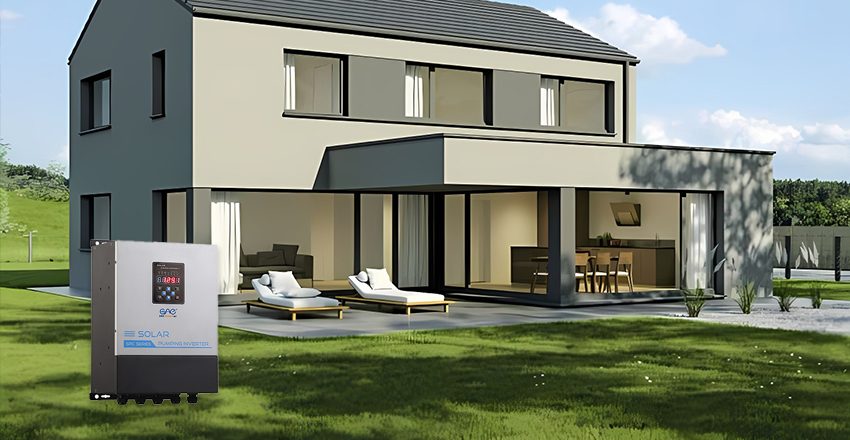With the growing demand for renewable energy solutions, solar power has become a viable option among homeowners. Perhaps the single most important piece of a solar energy system is an inverter, which converts the direct current (DC) electricity created in solar panels into alternating current (AC) electricity for use in your home. Traditional string inverters are widely used to convert solar energy into usable electricity, but microinverters are also an option that provides many benefits.
On the other hand, microinverters are small inverters that are connected to each individual solar panel—this means each can operate independently. In this blog, we will cover why you might want to install solar panel micro inverters in your home, and how they can enhance your overall solar energy system.

Lowered cost of solar energy Despite the existence of common solar inverters, the majority of people are now recognizing the efficiency of microinverters. In traditional string inverter systems, the weakest panel in the string dictates the performance of the entire system. A group of PV panels is a series, meaning if one panel is dirty, shaded, or underperforming, all the panels in the system will be affected.
Microinverters, on the other hand, function at a panel by panel level so every panel can work autonomously. If one of these panels loses efficiency, it not affect the others. This optimizes energy yield for each panel even in less than ideal conditions, such as shading, dirt and panel degradation in time. In fact, if your home has partial shading or if your panels are installed at different angles, this can result in overall increases in system energy production.
Partial shading is one of the most common challenges faced by solar energy systems. In traditional string inverter systems, just a small amount of shade on one panel can cause a massive losses in energy production across the whole system. That’s because the panels in the string are wired together, and the system is only as strong as its weakest link.
Since microinverters essentially allow each panel to work independently, this problem is solved. If one panel is shaded, its microinverter will try to pull as much power out of that panel as it possibly can, while the other panels produce at optimal levels. – This improved performance in partial shading conditions means that (for example) if some panels are partially shaded all day, your system will still maximize its output.
Microinverters provide better system reliability compared with traditional inverters. If the centralized inverter fails or has an issue, in a string inverter system the entire system is compromised, resulting in a huge loss of energy generation. Microinverters have greater endurance since they are attached to each separate panel. In the event of a microinverter failure, the other panels and inverters continue to function normally, minimizing the impact of any failure. This redundancy makes it less likely that your solar system will be out of commission for extended periods, so you can enjoy more predictable energy generation, and more peace of mind in terms of repairs and maintenance.
Microinverters also provide homeowners with panel-level monitoring, so you can see how each individual panel is performing in real time. This is not possible with classical string inverters, as only system-wide performance data can be accessed. With microinverters, you know right away if a particular panel isn’t performing up to par, and can act accordingly, cleaning the panel, adjusting it, or repairing your microinverter.
Most microinverters include built-in monitoring platforms that you can access through a smartphone app or web portal, so you can monitor the performance of your system remotely. This streamlined visibility allows you to rapidly identify how to optimize your performance, troubleshoot issues, and maximize energy production while decreasing maintenance costs.
Solar systems based on microinverters are also more flexible if you want to expand yours. They are powered independently by tiny solar panels, which means you can always add more panels to your setup as your power is consumed – no need to match new panels to the old inverter.
Due to this approach, adding more panels in a conventional system necessitates a full inverter upgrade to accommodate the additional load. With microinverters, though, you just get more panels and the thing keeps on functioning, no matter how many you have. That modular design means microinverters work well for homeowners who might like to increase their solar system down the line and do so without a prohibitive upfront price tag.
Safety is a top priority for homeowners considering solar installation. Traditional string inverters often operate at high voltages, which can pose a safety risk in the event of an electricalssd fault or malfunction. Microinverters, on the other hand, operate at lower voltages, significantly reducing the risk of electrical hazards such as shocks, fires, and other potential risks.ioi
In addition, many microinverters are equipped with built-in safety features, such as arc fault protection and automatic shutdown capabilities, which can further reduce the risk of safety hazards. This makes microinverters a safer option, especially for residential installations.
There are numerous reasons to consider solar panel microinverters for your home, including improved energy efficiency, better performance in shading conditions, enhanced reliability, and simplified maintenance. Microinverters also offer the flexibility to expand your solar system, provide advanced safety features, and ensure long-term performance with a longer lifespan and warranty. With all of these advantages, microinverters are becoming an increasingly popular choice for homeowners who want to maximize their solar energy production and improve the overall performance of their solar systems. If you’re looking to invest in a solar energy system that is efficient, reliable, and future-proof, microinverters could be the perfect solution for you.